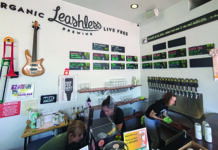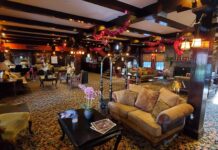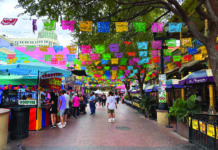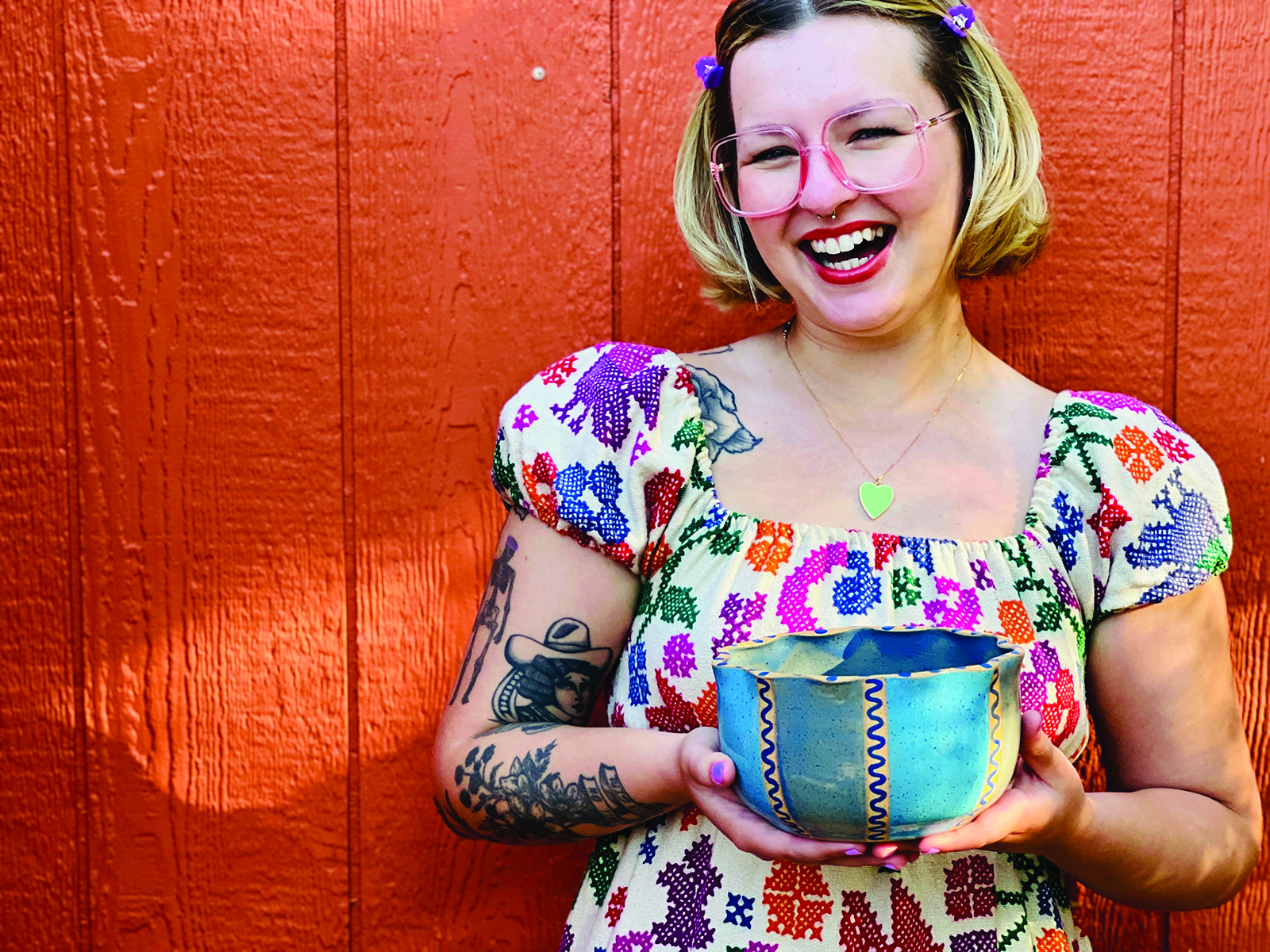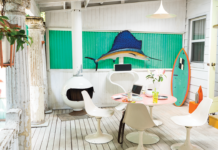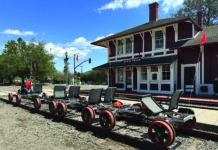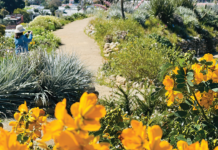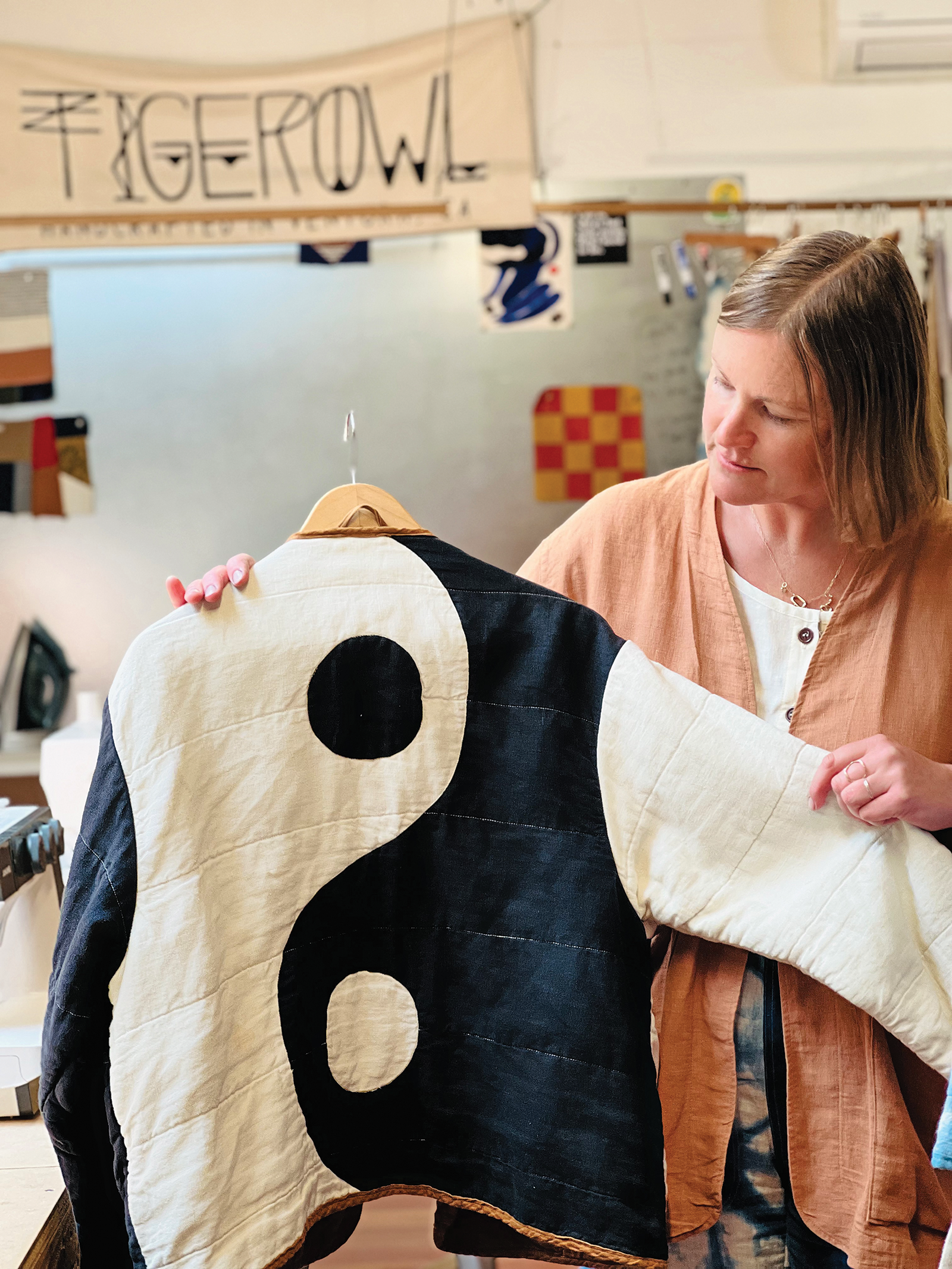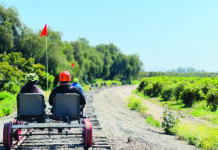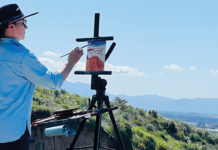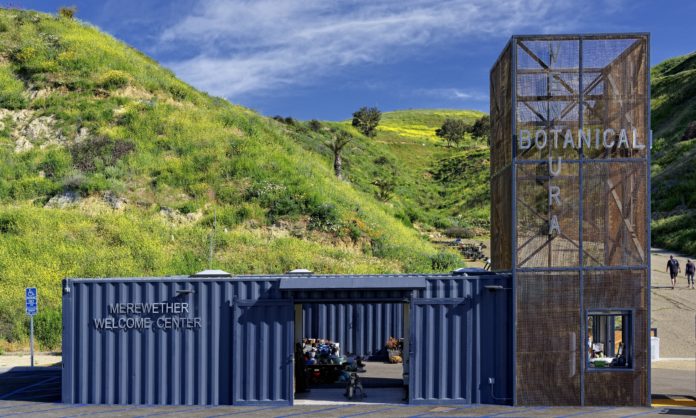By Nancy D. Lackey Shaffer
In the hillsides behind Ventura’s City Hall are several acres of natural paradise. A place where picturesque trails wind through a landscape filled with thousands of plants and stonework elements, gently rising for nearly a mile. From the top, and at several points along the way, are expansive views of the city, the ocean and the Channel Islands beyond. Stunning sights, beautiful surroundings and blissful serenity, all just steps away from the hustle and bustle of downtown.
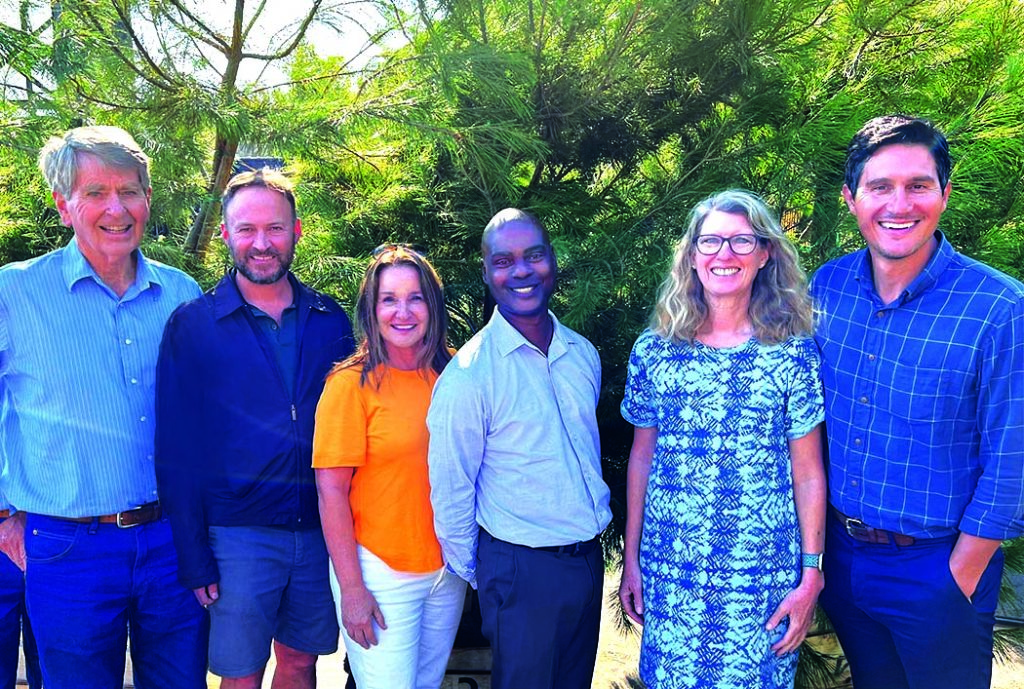
This enchanting locale is the Ventura Botanical Gardens, which began to take shape in the early 2010s and continues to be an ambitious work in progress. Overseeing the longterm plans as well as the day-to-day maintenance are a group of committed staff, board members and volunteers. A few of these VBG stewards — Executive Director Joe Cahill, board member Tracy Long, co-founder/advisory board member Rosa Lee Measures and board president Derrick Wilson — talked to Ventana Monthly about the development of the botanical gardens, the challenges of the Thomas Fire, future visions for the institution and more.
VENTANA MONTHLY: How did the idea of a botanical garden in Ventura first come about?
ROSA LEE MEASURES: Inspired on a trip to the beautiful gardens of Sweden and Norway, a few enthusiastic women began an extensive search. Midge Stork, Beverly McCaslin, Christian Taylor, Joann Kaplan, Nancy McAvoy and myself concluded a large-scale exploration with the selection of Grant Park, a world-class site overlooking the Pacific Ocean. Then, the process of a public-private partnership began.
What distinguishes a botanical garden from just another natural or pretty place? What makes an area a “botanical garden”?
DERRICK WILSON: Botanical gardens are important because there is a commitment to conservation and education of plant species that are rare and endangered. Visitors can learn about plants and enjoy them in an outdoor setting without having to travel great distances. We have collections of plants from the five Mediterranean zones which you probably would not find in just a regular park.
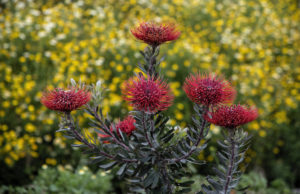
Photo by Phil Ranger
What makes Ventura Botanical Gardens special?
WILSON: The Ventura Botanical Gardens started as an idea from a group of community members. Over the years, hundreds of volunteers have given their time and efforts into building our trails, maintaining plants, hosting our Visitor Center, and serving on the board of directors. It truly is a community garden for all of Ventura County. It is also great to have this unique partnership with the city of Ventura which adds to making the gardens a special place.
Tell us a little bit about the history of the land that is now Ventura Botanical Gardens.
TRACY LONG: The Ventura Botanical Gardens are located in Grant Park on the hillside above downtown Ventura. The rugged hills, located in one of the five Mediterranean climate zones found in the world, have a rich history associated with agriculture and water management. The area was considered part of Mission San Buenaventura and during the Mission period, it was used extensively for both farming and grazing. Over the course of about 200 years, a large portion of the land was used for growing vegetables, a pine grove and a citrus orchard. The hillsides were terraced for farming, and an intricate system of dams, capture basins and canals was constructed for irrigation. Much archaeological evidence of this agricultural use can be found in and around the gardens.
In 1918, Kenneth Grant, the owner of the land at that time, donated about 110 acres to the city of Ventura to be used as a park. The city was only able to develop a few small sections of the park for public use, so it made sense to offer the acreage to a nonprofit for development as a botanical garden. The Ventura Botanical Gardens are taking advantage of the Mediterranean climate and geological variety on the hillside to develop five separate gardens representing our sister climate areas here in California, the central coast of Chile, the Cape of South Africa, Australia and, of course, the Mediterranean basin. We currently have 35 to 40 acres under our care, but once completed, the gardens will occupy 107 acres of Grant Park.
When the first trails were being created, those acres that are now part of VBG were free and open to the public. When did that change, and why?
WILSON: The Ventura Botanical Gardens is not funded through tax dollars, like Arroyo Verde Park and other city, county, state and federal parks. It was built and is maintained by the community through admissions, donations, grants and memberships. It is only because Venturans wanted to preserve and support this hilltop gem that it even exists. Like other gardens, the fees help VBG to further develop the gardens and to maintain plants and infrastructure.
For those who can’t afford the $45 annual membership, the upper trails off Brakey Road are open and free to the public. We also offer free admission every Friday and on select holidays. EBT cardholders, educational groups and children are also free.
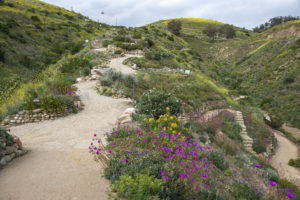
How badly was the land damaged during the Thomas Fire?
LONG: The Thomas Fire blew through all of Grant Park during the first night of the fire. Virtually every plant was impacted in some way by the fire. Some were blackened and denuded, others had heat damage, and many burned to the ground, including a few rare and endangered specimens.
Sections of pathway were damaged when retaining walls and underground roots burned away. Most of the signage that we had in place at the time was destroyed. In the rains that followed, we suffered mud and rockslides where mature plants had previously kept the steep hillsides together. Although the impacts of the fire were visually and emotionally devastating at time, the gardens have since recovered and substantially surpassed their pre-fire development.
What challenges and projects were undertaken to restore the gardens after the fire?
LONG: After the Thomas Fire, the Ventura Botanical Gardens remained closed to the public for 11 months. In the early stages of the recovery, staff and volunteers spent countless hours assessing the damage and cleaning up debris left both by the fire and decades of overgrowth. Walls, pathways, signage, irrigation and other infrastructure had to be repaired and replaced. Plants that survived the fire needed special care. However, the closure did offer opportunities that had not existed before. Construction of the new Merewether Welcome Center was able to move ahead rapidly, and planting and the addition of new amenities were made easier by the brush removal provided by the fire.
Tell us a little bit about what Ventura Botanical Gardens offer today. What are some of the biggest attractions and hidden gems?
LONG: Visitors to the gardens today have so much to enjoy. Although the Ventura Botanical Gardens are still in the early stages of development, we have a collection of over 40,000 plants in our care. Many of these are rare species that aren’t easy to find anywhere else. The plants, the winding pathways, the garden art, and the many other interesting amenities are accented by the stunning views of the coastline, ocean and islands. Our guests often comment on the colorful blooms that can be found in the Chilean and South African gardens, all of the impressive rock work, and the ocean views that change as you go up the hill. The otherworldly giant aloes in the Karoo Garden are a favorite, as are the beautiful proteas and bulbs found in the Fynbos Garden. Our visitors also enjoy taking a break in the Welcome Center and browsing through the gift shop. We always have new projects in the works, and the plants themselves are ever-changing, so visitors will always have something new to see.
What are some of the more recent changes or additions?
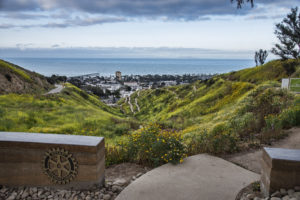
JOE CAHILL: There is always something new for visitors to see. In the last year, several lookout sites have been added with benches and sculptural features that provide great spots to stop and rest and enjoy the views.
The gift shop at the Welcome Center behind city hall continues to evolve with a fun selection of botanical-themed items, plants and ceramic pots.
New educational signs have been added throughout the garden to provide more information for visitors as well as tour groups of school children and adults.
The conservation programs have really expanded over the last two years. The Ventura Botanical Gardens is now conserving a growing collection of around 80,000 plants. Our conservation mission is focused on California native species, particularly threatened and endangered plant species and rare local endemic plants. Visitors will also experience our smaller plant collections from our sister Mediterranean climate regions of Chile, South Africa, Australia and the Mediterranean. These collections also feature many threatened and endangered species that are part of important conservation programs with partner botanic gardens in California and around the world. Conservation to prevent the extinction of plants really is a global problem that benefits immensely from global conservation efforts.
Looking toward the future, what plans are in store for VBG in the next couple of years? How about longer term?
WILSON: Immediately in the next few years we are looking to complete the planting of our Olive Grove and several major donor sites. Additionally, we look to finish planting thousands of trees as part of a grant from the state Environmental Enhancement and Mitigation Program. In the future, we have plans to construct an event center and an event meadow — both of which will have multiple uses and a new road entrance. We also look to expand our irrigation systems so new plants can go into the new trails we plan to build.
What’s something about VBG that most people don’t know?
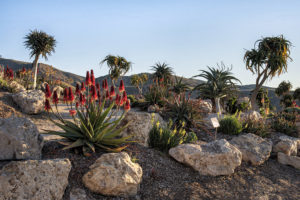
MEASURES: Ventura Botanical Gardens have become a major focal point, drawing visitors from around the globe. Hotels and restaurants are the primary beneficiaries of an economic impact, with a very low carbon imprint. We are thrilled with our success of bringing people together from all walks of life, not only to enjoy, but to get involved, and become invested in the gardens.
CAHILL: We are in the infancy of a 40-year master plan. When it is complete, the gardens will cover 107 acres, the vast majority dedicated to California native plants.
VBG is a national leader in water conservation among botanic gardens. All of the plants in the collections are drought tolerant and sustainable because they are California natives or plants from our sister climate regions, so the plants are adapted to the same climate conditions as Ventura. After the first year or two, the plants become established and can survive on the annual rainfall we have in Ventura. In addition, 95% of the water used to irrigate the plants to establish them is reclaimed water.
We are also experimenting with collecting water from fog and other sources. Having flexibility and being able to draw from multiple sustainable water sources is the best way to maximize conservation. We really strive to be an exemplary model for other gardens to follow.
What is your favorite place in the garden, and why?
WILSON: The South African Garden with plant collections representing the fynbos and karoo plant communities. The fynbos section is very colorful and there is always something new to discover throughout the year. With additional seating in both sections of the garden, it is a great place to sit and enjoy nature.
Ventura Botanical Gardens
567 South Poli Street, Ventura
805.232.3113



